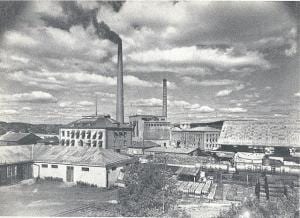 Concrete takes time to make, takes time to be shipped, takes time to use.
Concrete takes time to make, takes time to be shipped, takes time to use.
During the floods of Tropical Storm Harvey, I noticed we all forgot an important distinction: physical objects often take much longer to make or transport than virtual objects. We heard when we needed relief that “stuff” was on the way, people were making things we needed, but (sometimes) forgot that while money can be donated (with today’s technology) instantly, getting goods takes longer.
Money we got quickly: the steel took longer.
Metaphysical reality is beyond space and time: eternal, enduring, present. Our minds, linked to our physical bodies, have access to the metaphysical realm so the ideas we access can move as quickly as our mind-body interface. This can be very fast indeed, as our consciousness shows (seamlessly present to us). Any idea, like money or Hamlet, that we create in imitating the true Creator in whose image we are made, can speed around the world only limited by the physical medium that we use. As we have found faster ways to transmit ideas, humanity has become used to very quick access. We (almost) can have our ideas as quickly as our demands!
Physical reality is, however, still bound by the laws of physics. Our bodies are made of meat. They grow and move in a physical world that is constrained by natural law. This physical realm exists in eternal synergy with the metaphysical, but neither can be reduced to the other. As a result, we cannot “will” concrete, wood, steel, or other building materials to Houston at the speed of fiber optics. We have to move these physical objects through routes appropriate to them. Our minds bid them go, but they can only go as quickly as the mediums we have devised to move them. For a bit this speed kept increasing. Over the lifetime of Queen Victoria, for example, muscle power (people and animals) was replaced by machine power. Only two years after her death, men were flying. The trains at the time of her death could clip along at fifty to sixty miles an hour. That was amazing, but our progress in terms of speed in this area has slowed.
Perhaps this relative slowdown was natural as the more physical a thing is (concrete is very concrete), the more the transmission is limited by physical laws. Hamlet can be transmitted in an auditorium from an actor to the audience (in mass) at (basically) the speed of sound. The play is thing and the play is a set of ideas.
When stressed, however, I can often demand someone turn the very physical (medical equipment!) into the idea of medical equipment. We are not God so we cannot speak the physical into existence! We must make and then transport in the best medium we have. We can conceive of the idea of protective medical equipment in a stroke of genius, but the production is limited by the speed of our looms. If we do not yet have looms, having sent them off to other places, building the looms is also slow.
None of this is to comment on our preparation for the pandemic, good or bad, just to observe that willing a thing, even willing it strongly with all the force of a mighty government, does not make a physical thing defy the laws of physics. They can only come as quickly as our factories and our infrastructure can make and move them. That is not nearly as instant as hitting a GoFund me button and moving money about the world. We forget the heroic work of the truck driver, the cargo ship worker, power line repairman, the pipeline person who cannot shelter in place or we would starve, lack material goods, and sit in darkness. They can only move at the speed of trucks, ships, planes, and matter.
We have to recollect the limits and the distinctions.











